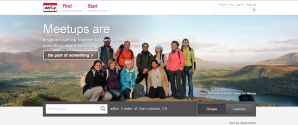Hello everyone! Welcome to my blog!
I am happy to start having my own blog where I can share things that I enjoy and my personal thoughts on them. Now what things do I enjoy exactly? Well here is a list of things that I want to share (but not limited to):
- Any tech products that I get my hands on or read about (like iPhone 5s, Samsung Galaxy Note, Oculus Rift).
- Any personal projects that I’m currently working on.
- Any meetups related to software development I attend.
- Video games that I am playing or have played.
Id like to add more, but I don’t want to throw too much text at your face. Instead, Ill go on my first two topics of my blog site, my most recent project and explaination on webpages!
I have finished modifying my portfolio website. Before I decided to have this blog, my website was almost 100% complete. I found out that there are a few small fixes that needed to be made that I overlooked when I first made the website (oops). I also added a link which directs the site viewer to this blog site as well as adding a nice feature where the links to the blog site and my resume open a new tab instead of taking the viewer away from the website. Come check out the portfolio site here: http://www.jakerushing.com/.
My portfolio website was my first personal project where I made the project from scratch. I wrote these pages using only Notepad. Yes, that little software where you can type out your grocery list (or a to-do list) and the like can be used to create webpages, but there are superior tools and software that can accomplish the same thing.
Now how do these webpages work? There are 3 parts that make up a webpage: The skeleton, the style, and functionality. Ill throw a picture from the meetup site and Ill explain the three parts(The html wizards can skip to the last line)
See how the header on top, the text in the picture, and the grey bar are all structured? This is the skeleton of the page, and each element is structured by HTML (or HyperText Markup Language). HTML is used to assemble the skeleton of the page altogether. This is where HTML wizards put in text, pictures, and even links that can direct users to another page.
HTML alone doesn’t really determine the aesthetics of the page. Like where are the elements (ie the top header on the meetup page) situated to make the page more aesthetically pleasing. Or how to color the bar below the picture dark grey. That is all done by adding some style to the page. This is where CSS (Cascading Style Sheet) comes in. By creating a CSS file for the HTML page, you can determine aesthetic attributes of each element, like the color of the element, the font style of the text in that element, or the position of that element, just to name the few of what you can do.
Last but not least, Javascript covers the functionality of html pages. For example, the web developers of the meetup home page coded in Javascript to where the background of Find and Search buttons(on top of the page) changes the background from white to red when a user hovers over one of the buttons. This is one of many possibilities you can do to add functionality to webpages
There is all sorts of tools web developers could use to do much more than what I’ve mentioned, like adding a slideshow to a page, but I would have to write a novel covering all of that. And this is a blog post. But I may cover different these tools in my future posts. For now, what I have mentioned are the basic necessities of writing a web page. And you dont even need Javascript to make a webpage! My portfolio site, for example, was made only with HTML and CSS until I added some functionality via Javascript just last night.
Thank you guys for stopping by! I hope to do another post by next week talking about something different. Until then, adios and Happy Belated Veterans Day!
